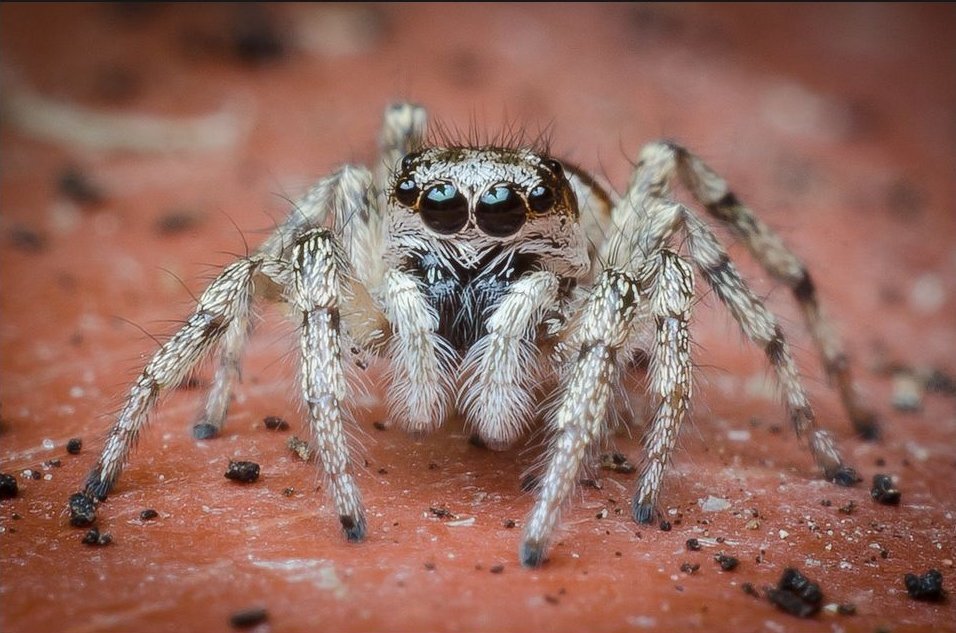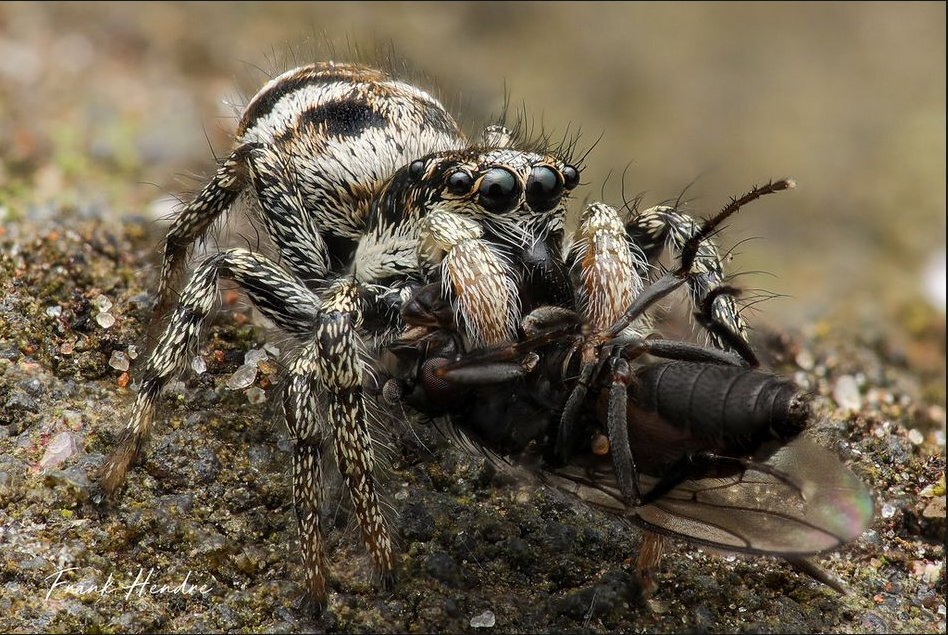Post photo found on flickr

Above Image ‘Zebra Spider [lat. salticus scenicus]’ by Rawbert|K|Photo, flickr
I really love those big eyed friends! Very fast and curious!
Camera Nikon D7000 with enlarger lens Nikkor EL-50/2.8 using two macro extension tubes and a special selfmade flashlight construction using the Nikon SB-600.

Above image, ‘Zebra jumping spider, Salticus scenicus’ by Frank Hendre, flickr
I love it when it grooms itself
The zebra spider (Salticus scenicus) is a common jumping spider of the Northern Hemisphere. Their common name refers to their vivid black-and-white colouration,[1] whilst their scientific name derives from Salticus from the Latin for “jump”, and the Greek scenicus, translating to “theatrical” or “of a decorative place,” in reference to the flashy, zebra-like coloration of the species.[2]
This species is naturally associated with open habitats such as rock faces, shingle beaches and occasionally the trunks of trees.[5] Due to their preference for open, vertical habitats they are often found living in proximity to humans in urban habitat such as on garden fences and the walls of buildings.[6] Spiders have also been known to enter houses, where they can often be found living in the corner of windowsills.[7]
Zebra spiders tend to hunt smaller spiders and other arthropods. They have been observed feeding on mosquitos that are almost twice their length. They have also been observed taking on prey items up to 3 times the length of the spider, such as some of the smaller species of moth. Like other jumping spiders, these spiders use their large front eyes to locate and stalk their prey. They move slowly towards their prey until they are close enough to pounce on top of their victim, and their hunting behaviour has been described as cat-like. Using their acute eyesight, they are able to accurately judge the distances they need to jump.
Before jumping, they glue a silk thread to the surface that they are jumping from so that if they miss the target, they can climb up the thread and try again - However, they may ‘abseil’ with a silk thread if they wish to descend from a height safely, for instance they have been documented ‘abseiling’ from ceilings. They ignore unappetising insects such as ants.


